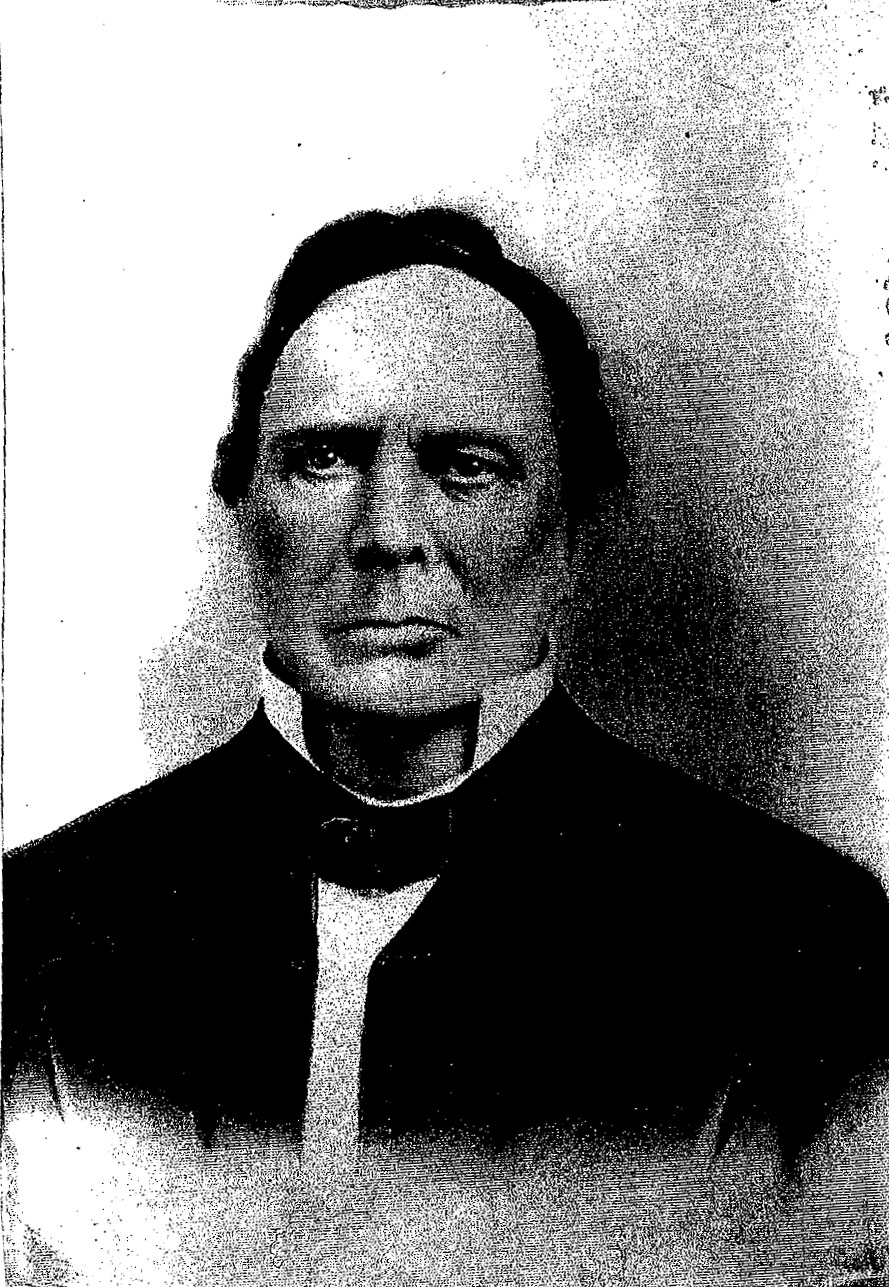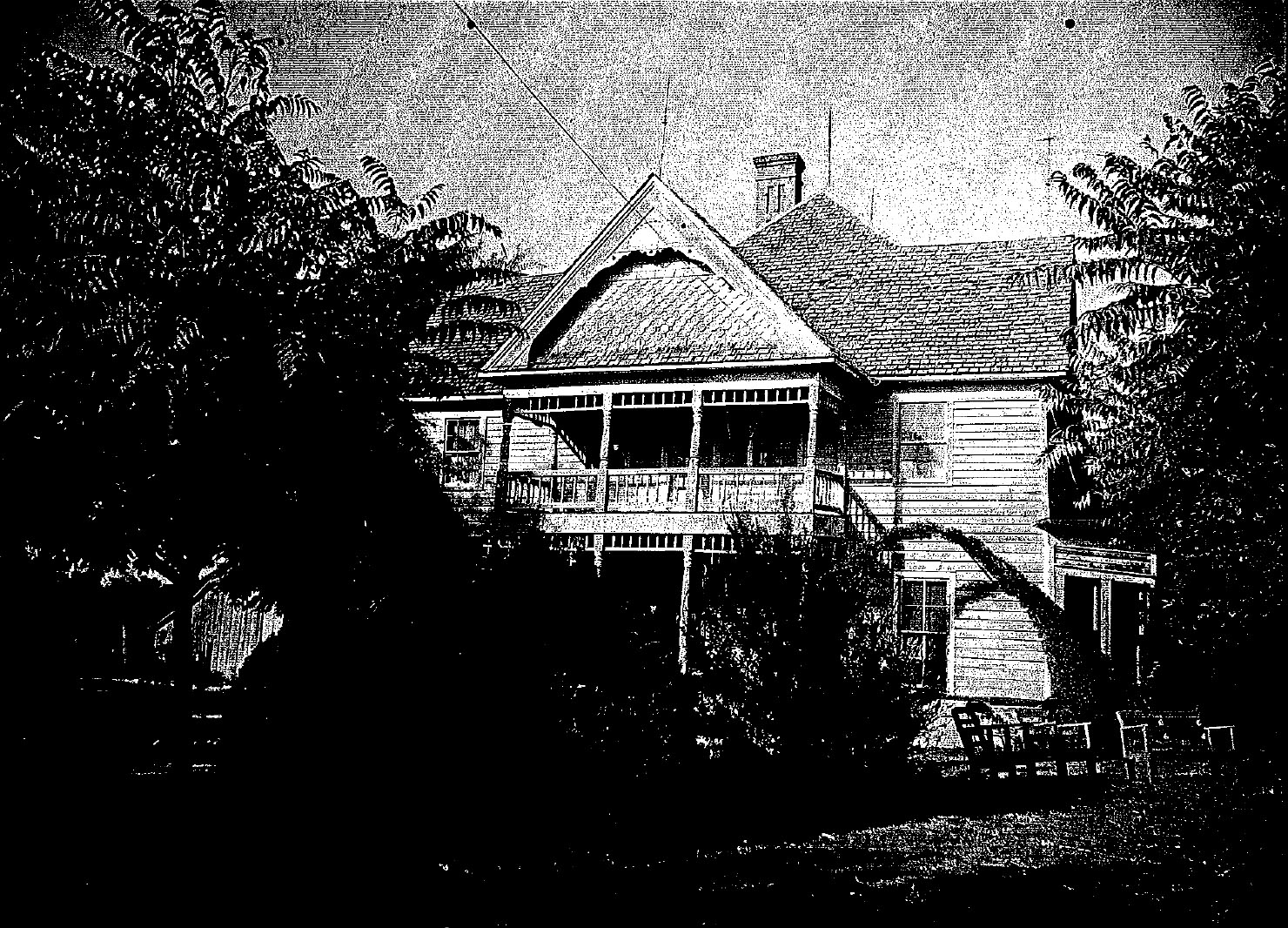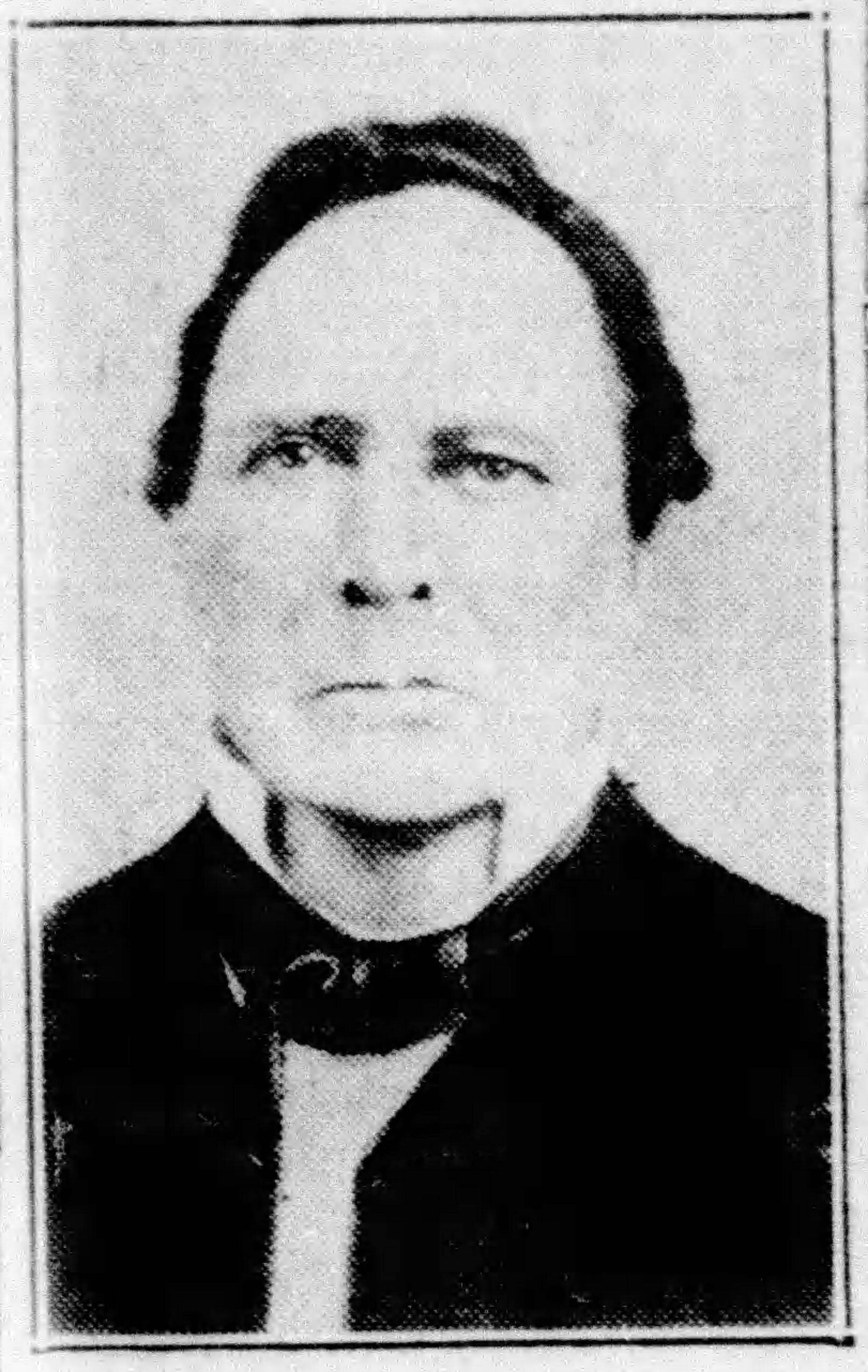James Sanford Muse
1804-1878

![]()
Eld. James Sandford Muse
By his Grandson, James M. Muse.
“James Sandford Muse, second son of Thomas and Ann (Wrenn) Muse, was born in Pittsylvania County Va., on the 31st day of Oct. 1804.”
The words quoted are from the family Bible of my grandfather, J.B. Muse. The book came to me by the Will of my step-grandmother, Margaret M. Muse, and the entries are in his handwriting.
There were seventeen children in that Blue Ridge mountain home, and my grandfather was the second son of my great-grandfather by his second wife. The old house of my great-grandfather Tom Muse is still standing, though much dilapidated. I went back to Virginia in the summer of 1935 and took a kodak of it.
The hardships which my grandfather had to undergo in his early years have been very vividly described to me by my father the late Thomas H. Muse of McKinney, Texas, who told of my grandfather plowing that rough mountain land when he was in his teens, clad only in a linsey-woolsey shirt, a one-piece garment made after the pattern of a sack with holes for the head and arms; and he said the rocks would fall back in the furrow on my grandfather’s bare feet.
It is almost impossible for me to conceive how a boy or young man, reared under such circumstances, could obtain an education. And yet my grandfather became a Latin and Greek scholar, well versed in all the learning of those times familiar with the history and mythology of all ages, a great student of the Bible and an influential and eloquent man.
I again quote from the entries in his Bible:
“James S. Muse, son of Thomas and Ann Muse, was married to Jane Slaughter by Albert Anderson of Johnathan Graves in Orange County Va. on Wednesday the 28th of May 1834.”
“James S. Muse and Margaret M. Slaughter were married by Elder R. Palmer at John Graves’ in Lafayette County Mo. on Wednesday the 17th of April 1849.”
About a year and a half after his first marriage he moved from Virginia to Scott County Ky., and afterwards to Lafayette County Mo., where his first wife died. Something over a year later he was married to Margaret M. Slaughter, who survived him.
I have no records by which I can tell the exact times when my grandfather became identified with the Christian Church. I have an idea that it was sometime in the 1840’s while he lived in Kentucky. At that time I am informed that the Christian Church movement was rather active in that section of the country. I have heard of McGarvey and also Alexander Campbell eating at my grandfather’s table. I remember one occasion that I have been told about when Campbell was so old and helpless that a young negro boy stood beside his chair and waited on him—practically fed him.
Negro slavery existed in this country at that time, and my grandfather became the owner of quite a number of negroes. I have a special reason for being quoted sure they did not come to him from his father, thought they may have come by reason of one or both of his marriages.
At the time he lived in Lafayette County Mo., the growing of hemp was a money making industry, and he was able to accumulate money and property rather rapidly.
About 1856 or 1857 he decided to sell his real estate holdings and move to Texas. His reasons for so doing, as reported to me by my father, were: That he had accumulated a sufficient private fortune, largely by means of the labor of the negroes in the hemp fields; and he wished to move to a place where they did not raise hemp, so the negroes would not have to work so hard, and the climate would be more suitable for them not being so cold and rigorous as that of Missouri.
There were no railroads serving this pare of the U.S.A. so it was a long journey over land. The caravan moved by easy stages, slowly; My grandfather and family in the large carriage, and the remainder of his entourage in wagons, with some on horseback to keep the drove of horses and cattle in line and serve as a lookout and guard in case hostile Indians were encountered. It makes me think of Abraham moving across the country and grazing his flocks and herds along the way.
About a year ago something occurred which threw what was to me a rather interesting sidelight on that trip. An old darker, who used to belong the Smoot family, and who, as was their custom, took the name of Smoot, approached me on the street and said:
“Mr. Muse, when we was comin’ to Texas yo’ grandpa an’ his wagon train overtook ours. I jus’ a lil bit uv a shile. It was hot an’ dusty, an’ we wiz all tired and mabbe bawlin’. I ‘member he druv his kerridge up erlongside uv us an’ said: Give dem chilluns something to eat!”
The trip ended at what was then the little frontier town of McKinney, county site of the 11 year old County of Collin. He purchased 320 acres of land lying about one mile north west of the centre of the town, and on a beautiful hill on the south side of said tract of land, in 1857 he began the erection fo a large two-story colonial house, with a two-story "L" larger than the front, with a ten foot porch all around it upstairs and down. It served him as a home for the balance of his days, and also served to hose the Old Muse Academy, one fo the earliest schools in this part of Texas, during the time that it was in existence.
I have been unable to learn just when he began his active ministry in the Christian Church, but I am sure it must have been some time before he came to Texas. On reaching McKinney he promptly identified himself with the First Christian Church. He never held a regular pastorate, but preached at this church at any and all times when no other minister was available. He also filled preaching appointments at various places over the county that were in reach by carriage and horses; and organize churches. He never received a cent of slavery or other compensation in his work as a minister of Christ. He believed that those who devote their time to his service should be compensated; but as for himself he felt that he did not need to be paid, and might be able to do more good without it. According to the statements of the old timers, upon which most of this article is based by the way, he was a most eloquent preacher, used beautiful language, and was most powerful in exhortation.
At the outbreak of the Civil War his feelings were not he side of the south, but his judgment was that secession was unwise. However, his tow elder sons, James Martin Muse and Thomas Henry Muse, immediately volunteered and marched away to war on the side of the Confederacy; and James Martin (for whom I was later named) was killed at the battle of Shiloh. WHen slavery was abolished sever of his negroes would not leave him, so he employed them and paid wages to them for a number of years afterwards.
The Old Muse Academy
In this new country there were almost no schools and churches, many of the pioneers were very illiterate, and their children were growing up without an opportunity to obtain even the rudiments of learning. My grandfather, in building his house, designed it so that it could be used for school or church purposes. By employing folding doors in place of partition walls, he arranged it so that four large rooms could be thrown into one. He established a private school in his home with a course of study covering from the primary grades up to and including Greek, Latin and higher mathematics———in some respects a higher curriculum than many of our high schools have today.
In this school work he was assisted by his two daughters, Miss Millie and Miss Mary Ellen (afterwards Mrs. Sam R. Berry), both graduates of Daughter’s College, Harrodsburg Ky. Later through the kindly offices of Dr. Rufus Burleson of Waco and Judge T. J. Brown (what was afterwards for a number of years Chief Justice of the Texas Supreme Court) he obtained the services of Miss Mary Belle Bently, who held degrees from Daughter’s College, and also from Waco Female Seminary, and the Burleson school which afterwards became Baylor University. She assisted in the school for a number of years, and afterwards was married to the returned soldier son, Thomas H. Muse, and became my mother. There were a number of other teachers in the school, but I am not able to give their names at this late date.
He continued to carry on this school work, as well as his church work so long as he was physically able to do so, and up to about the beginning of the public free school system of Texas.
The school, being the only one of such high grade in this part of North Texas, was very generally patronized, not only throughout Collin County, but by residents of adjoining counties for a good many miles around. Nearly all the old pioneer families of this county sent to this school, such as the Boards, Newsomes, Emersons, Stiffs, Waddills, Bounds, McDonalds, McGarrahs, Lovejoys, Harris’s etc.———to such an extent that there was a time within the memory of the writer when almost any prominent citizen of pioneer stock would tell you that he was a former student of this school. Th Harwoods and Peaks of Dallas County patronized it. From Decatur, Wise County, the cattleman Dan Waggoner sent his son Tom (the late W. T. Waggoner multi-millionaire in cattle an oil of Fort Worth, Texas). Gip Brown attended and was later Chief Justice of the Oklahoma Supreme Court. One of his younger sons, Philander B. Muse, got his entire education in his father’s house, and afterwards became a great lawyer, an eloquent orator, and Judge of the District Court of Collin and Grayson counties.
It is impossible at this late day to get a list of the students, and no attempt is being made to do so; but I will mention a few things related to me by elderly persons, most of whom are now dead, just to show the far-reaching influence and effect of the school and of my grandfather’ personality.
A country boy living north west of McKinney (Rev. R. C. Horn) attended the school, and was also baptized and received into the Christian Church by my grandfather. He then went away for his theological training, and came back to Collin County where he remained and preached the gospel until his death at the age of over ninety years———having served in the ministry of the Christian Church 67 years. His life and work are known among our people.
I am told by those who claim to know that Addison and Randolph Clark, those two wonderful preacher brothers who had such far-reaching influence upon the religious and educational development of Texas, attended the Old Muse Academy. In addition to their evangelistic work, they found Add-Ran College which, as is well known, later evolved into Texas Christian University at Fort Worth.
Back to Pittsylvania County, Va. Before the outbreak of the Civil War, Thomas Chattin Muse, a brother of my grandfather, lay dying int he one-story brick home of another brother, Robert Muse. He had only on son, James Archer Muse, quite a young lad, and before he passed away requested that this boy, his only offspring, be committed to the care of his Uncle Jim (my grandfather, Jas. S. Muse).
So, after the death of Thomas Chattin Muse, my great-uncle Robert Muse, took little Jimmie and journeyed to Lafayette County, Mo., for that purpose; but when he got there he found that my grandfather had already moved to Texas. So he took the boy back to Virginia.
Later however, but before he attained his majority, Jimmie Muse came to Texas, lived in the home of my grandfather, attended the Old Muse Academy, and later went back to Virginia. In those ox-wagon days communication between distant places was slow and difficult. James Archer Muse dropped out of the picture so far as we Texas Muses were concerned.
In 1931, while taking an auto trip through the North and East, I paused in Pttsylvania County, Va. long enough to try to locate the old home of my great grandfather, “the original Tom Muse,” where my grandfather Elder J. S. Muse was born, and from which place he moved away nearly 100 years ago ——also to locate and become acquainted with such of my relatives as might still remain in that part of the country.
Near Callands, a two-story white frame house was pointed out to me; and I felt before they told me that somehow I and my family were related to that house———there was something so familiar about it. They said:
“That is the home of James Archer Muse, where he lived, reared his family and taught his school. No one was more loved and respected. The most prominent citizens of our County obtained their education through him.”
I saw at once the parallelism of his life to that of my grandfather, and I thought how true it is that “God works in a mysterious way his wonders to perform.” ———through men as well as in other ways.
——————————
I have heard of only one trip that my grandfather made back to Virginia. That was after the death of his father, at which time I am informed that he waived his right to share in his father’s estate in favor of his sisters, because, as he said, he did not need it and they did. The only item he received from his father’s estate was a negro boy names John Sandford, who was of now valued except as a keep sake or heirloom, being so badly crippled that he could hardly walk and unable to talk distinctly enough to be understood. I was raised by John Sanford. He was a curiosity.
My grandfather died in 1878. The occasion of his burial is one of my earliest recollections. I was a child not yet six years of age. I remember that my father carried me in his arms, and the fact that there were tears in his eyes made a lasting impression on my young mind. The funeral cortège passed out from the house on foot through the big double doors on the east front; thence to a little family burial ground north of the house a short distance, where a clump of cedars remained for many years.
After it became evident that the City of McKinney was going to spread over the land, my father had the graves moved to Pecan Grove Cemetery south of McKinney.
My grandfather’s monument is a plain marble slab, as long and as wide as the grave, and laid flat upon it, with his name and the date of his birth and death out upon it, and, at the head, a small open Bible in marble. Except for this last detail, it is as simple and very similar to the one that marks the last restingplace of Benjamin Franklin in the church yard of Old Christ Church Philadelphia.
My grandfather was a man of great dignity, even to the extent of sternness when occasion required. I have been told that if there were the least tendency to rowdyism or unnecessary noise in any part of the house, all he had to do was to clear his throat and everything would be as quiet as a mouse. And yet, he was a devout good man, loved and respected by all, and his emotions were so easily affected that it was impossible for him to conduct a funeral service, and he would faint at the sight of blood. He took great pleasure in performing the marriage ceremony for young couples, and in bringing new members into the church. His home was headquarters for the pioneer preachers who came to this part of the country in those days.
It seems to me that the religious work which he did, and also the educational work, was of a missionary nature in those early days. The spirit of the volunteer ran through it all———“Here am I Lord, send me.”
-Matthews Papers, Texas Christian University, Special Collections
-Transcribed by Scott Harp, 08.19.2020
![]()
![]()

The Courier-Gazette, McKinney, Texas
July 8, 1936, page 1
(Click on article to read)
![]()
Directions To The Muse Family Graves
The Muse family plot is in the Pecan Grove Cemetery in McKinney, Texas. Take Hwy. 75 north of Dallas toward Sherman, Texas. At McKinney, take Hwy 399, South Central Expressway toward the East. In a couple of miles you will see the Cemetery on your right. Enter the main entrance and go to about midway of the second section. (Section 5 Row 16). The GPS is location below is the actual location of the graves in the cemetery.
GPS Location
33°10'43.9"N 96°37'01.3"W
or D.d. 33.178865,-96.617033
![]()
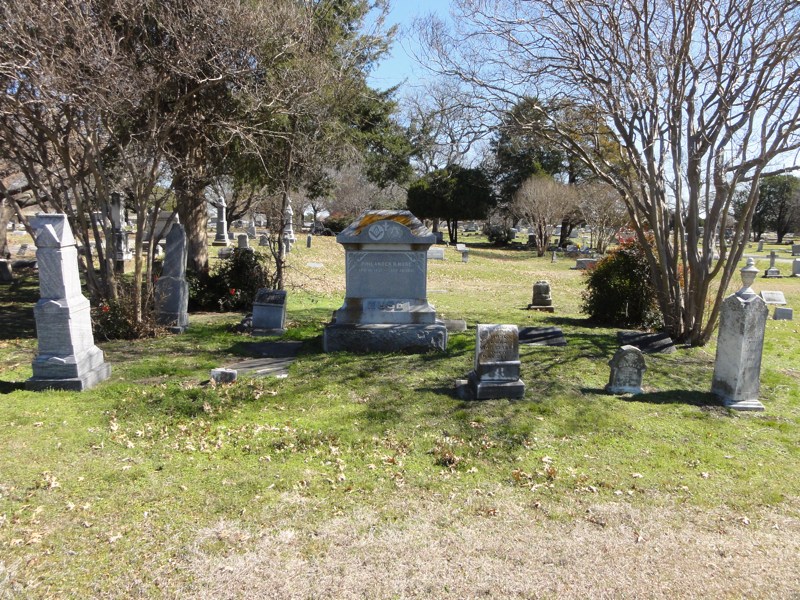
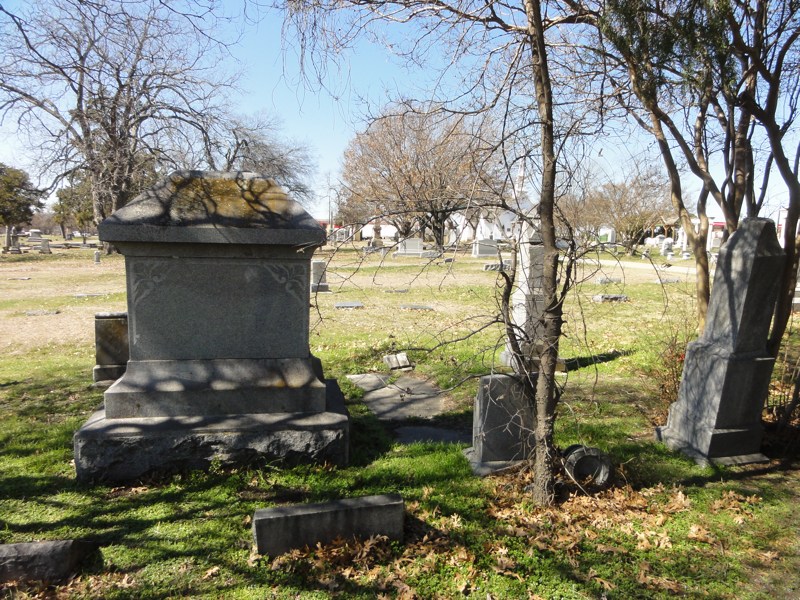
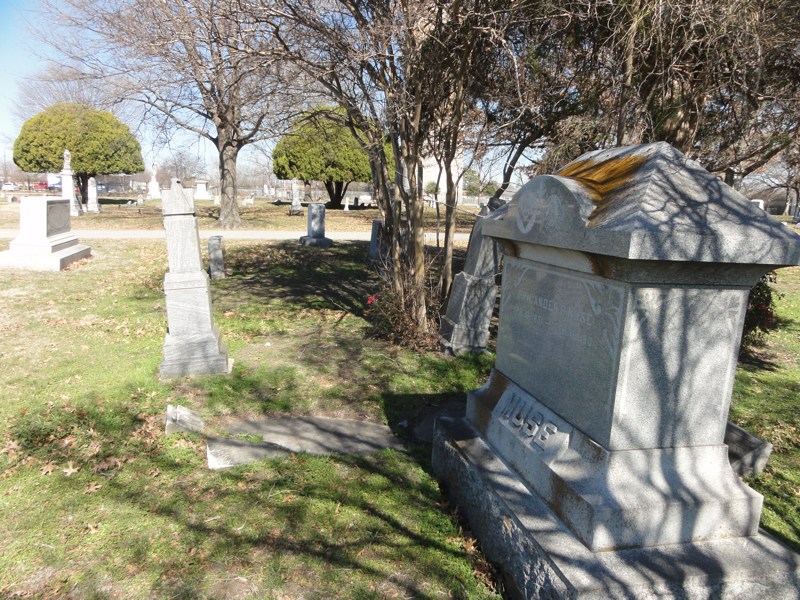
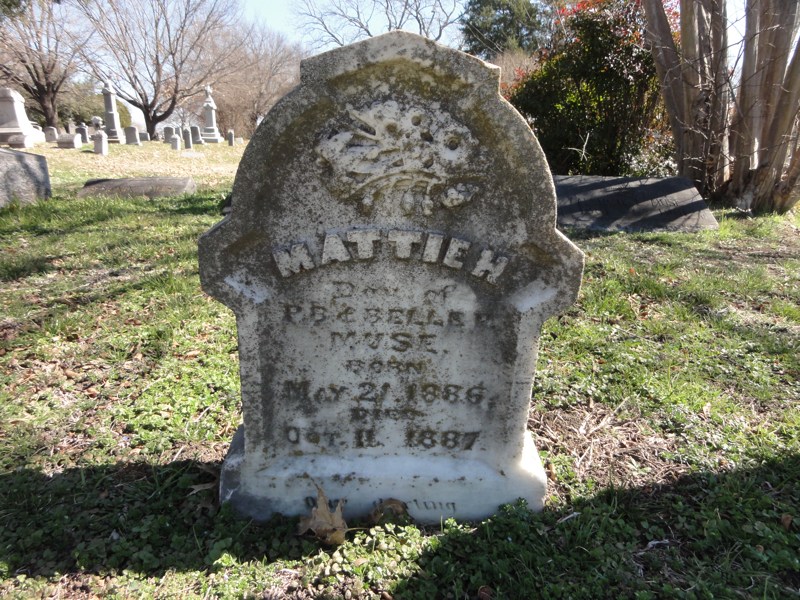
Mattie H.
Daughter of
P.B. & Belle P.
Muse
Born
May 21, 1886
Died
October 11, 1887
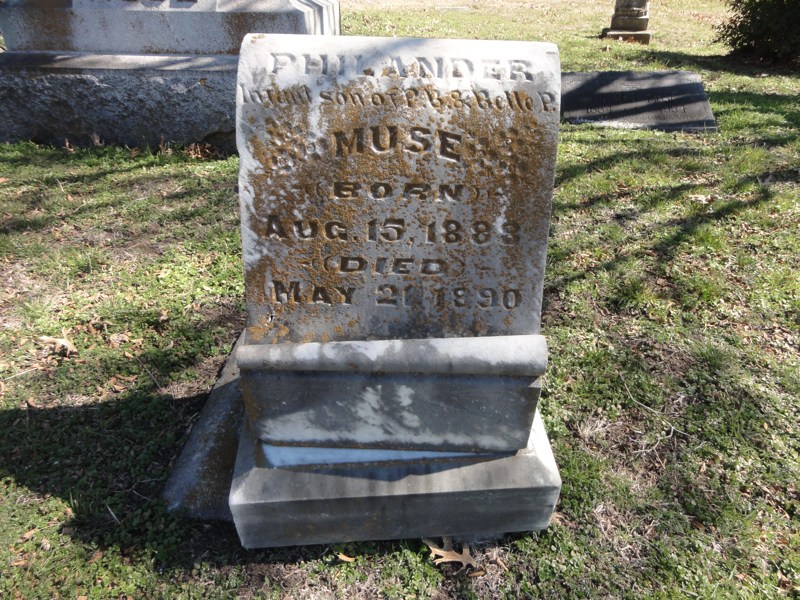
Philander
Infant Son Of P.B. & Belle P.
MUSE
Born
August 15, 1883
Died
May 21, 1890
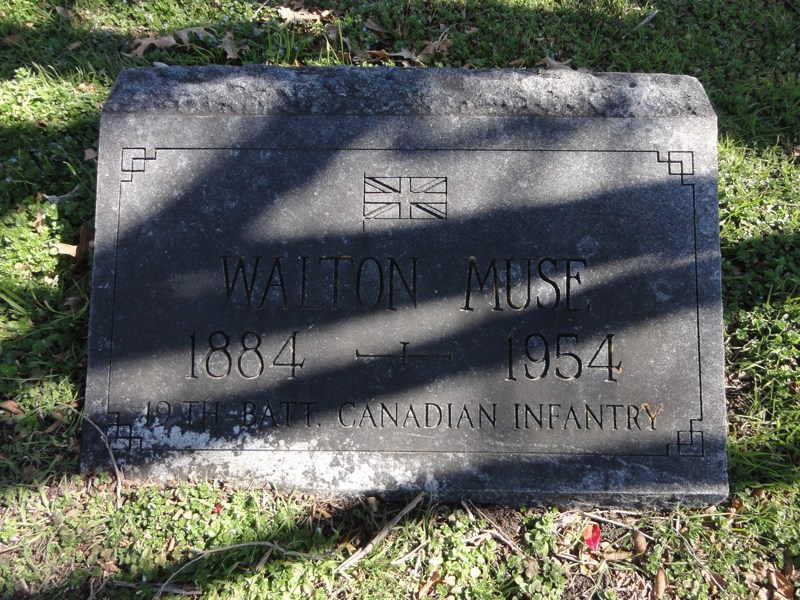
Walton Muse
1884-1954
19th Batt. Canadian Infantry
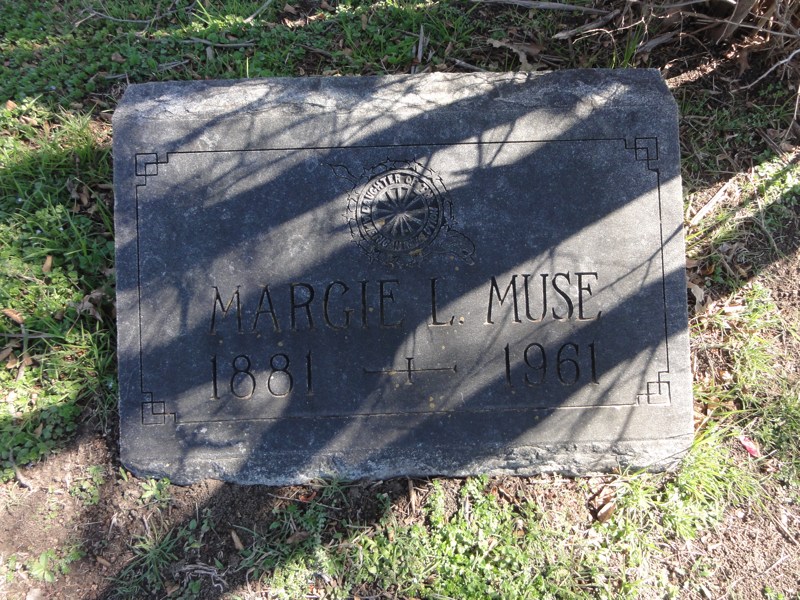
Margie L. Muse
1881-1961
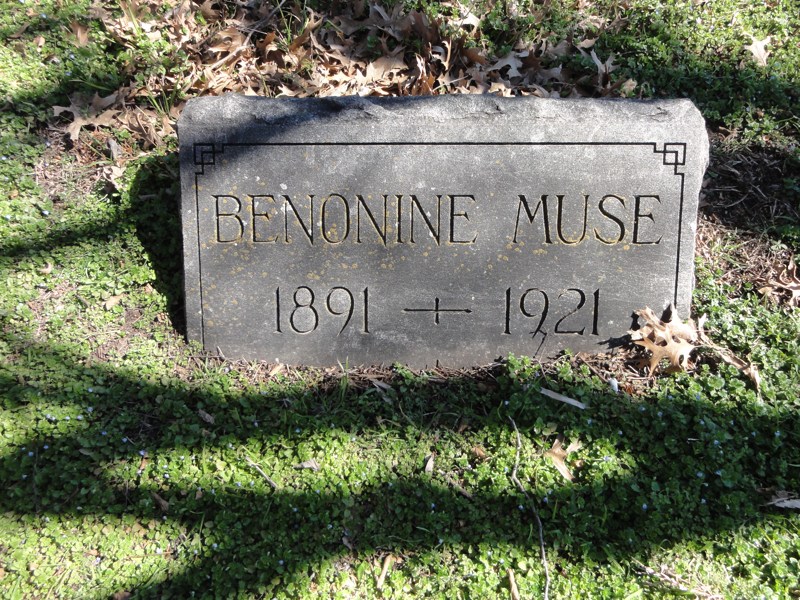
Benonine Muse
1891-1921
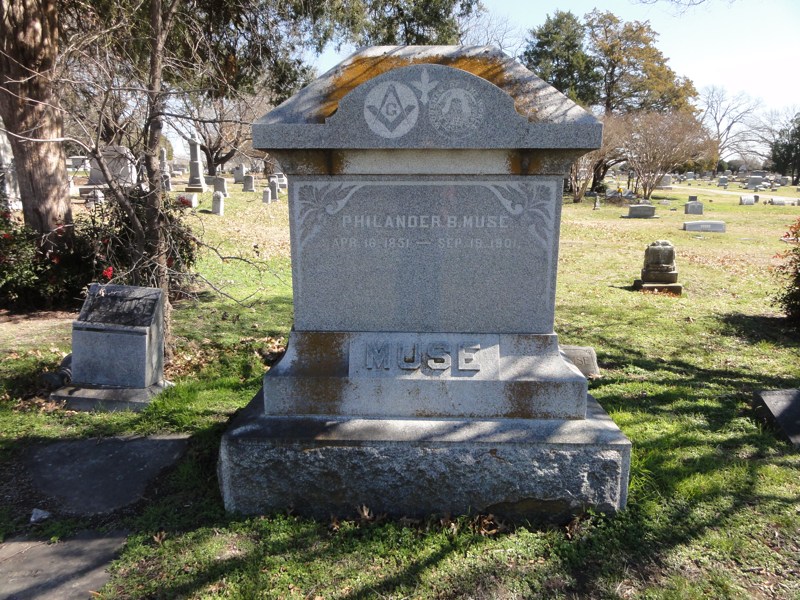
Philander B. Muse
April 16, 1851 - September 19, 1901
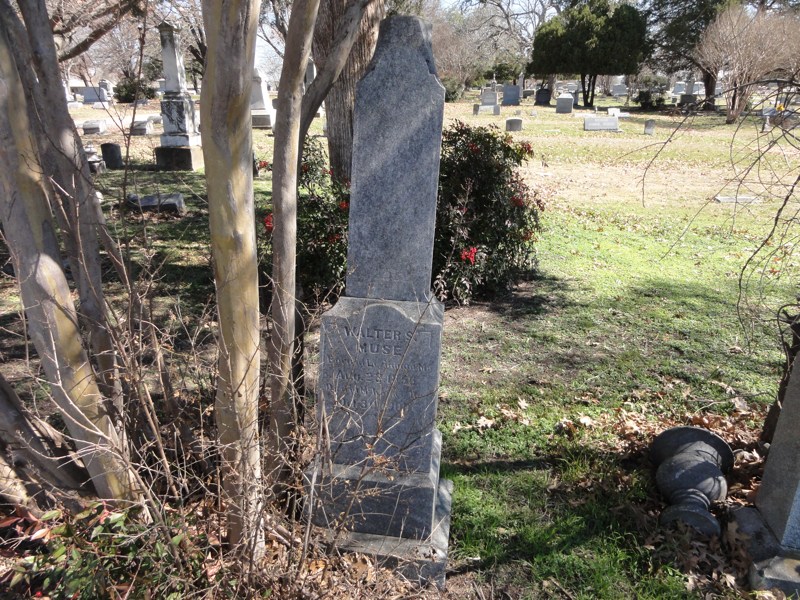
Walter S. Muse
Born in Lexington, Missouri
August 23, 1856
Died in McKinney, Texas
October 30, 1900
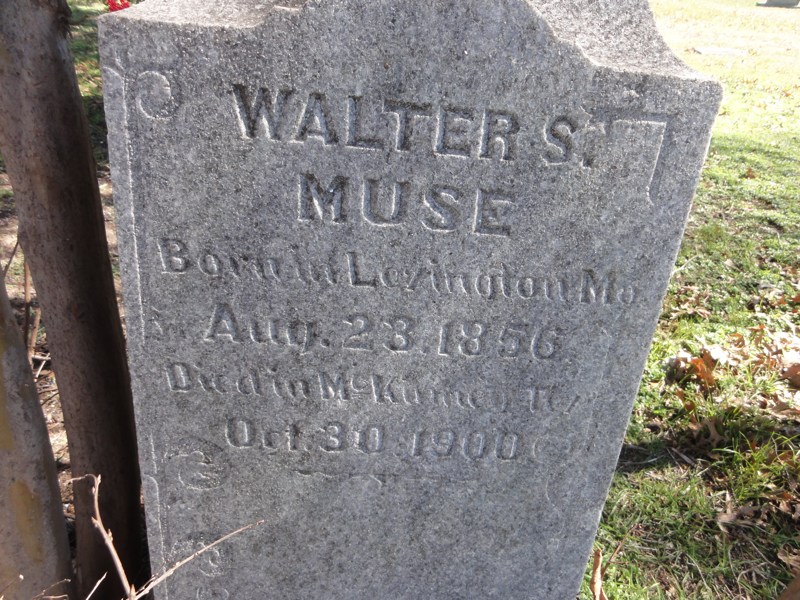
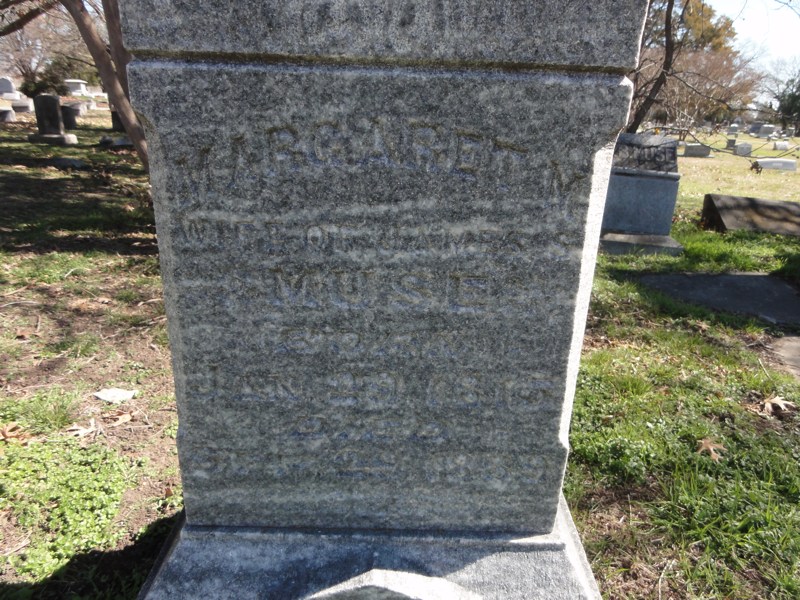
Margaret M. Muse
1815-1889
Second Wife of J.S. Muse
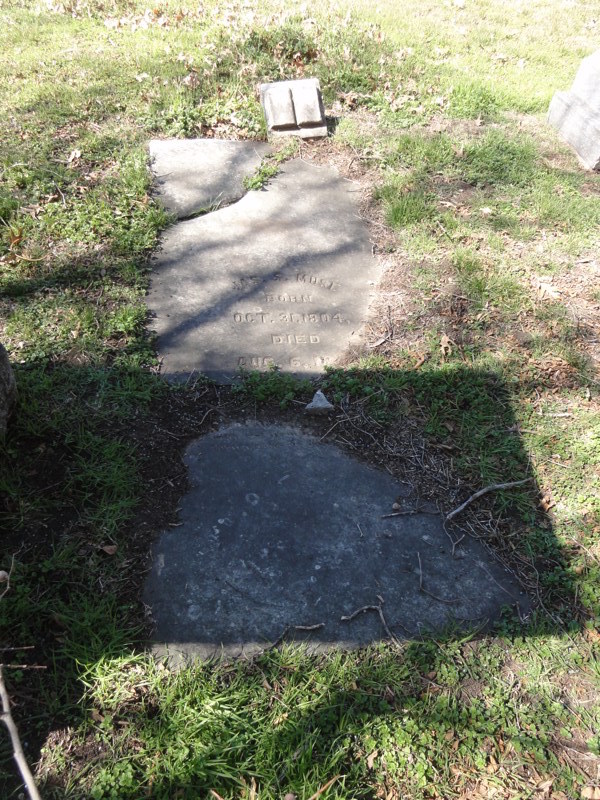
James S. Muse
Born
October 31, 1904
Died
August 6, 1878
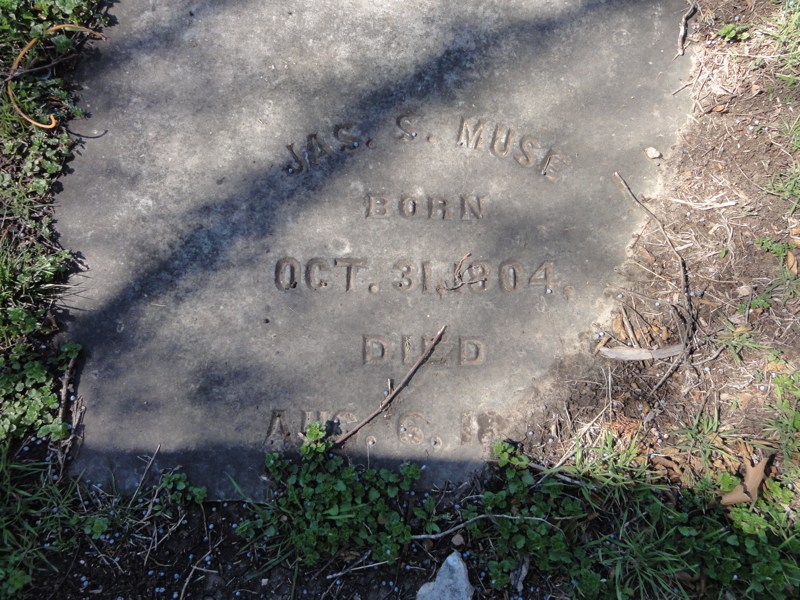
Block 39 Lot 5 Space 2
![]()
Photos Taken 09.19.2015
Webpage produced 08.29.2020
Courtesy Of Scott Harp
www.TheRestorationMovement.com
![]()
